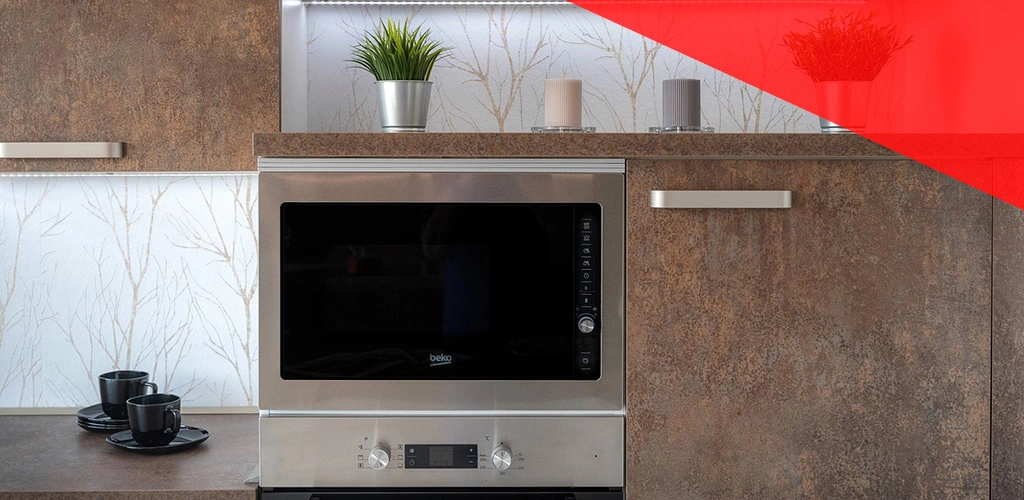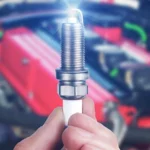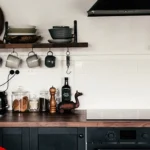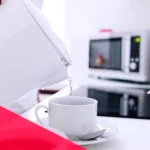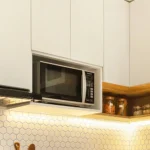Dr. Percy Spencer invented the microwave oven in 1945 while working for Raytheon Corporation on radar projects. After seeing a candybar melt in his pocket while working near a magnetron tube, he invented the microwave oven. First commercial microwave oven released in 1967.
How to use a microwave oven in a kitchen? How is it useful? Electromagnetic waves in microwave ovens vibrate food’s water molecules, creating heat through molecular friction. This cooks food faster than normal ovens.
Table of Contents
Advantages of microwave ovens include:
- Speed: Microwaves cook food in a fraction of the time of conventional ovens. It saves time and energy.
- Convenience: Microwaves are easy to use. Cooking requires little prep and no preheating.
- Energy efficiency: Microwaves are more energy-efficient than ovens. Food is heated directly, not air or metal.
- Compact size: Microwaves fit in most kitchens and are smaller than ovens.
- Safety: Microwaves limit burns and splatters compared to stovetops.
- Retain nutrients: Some nutrients are better preserved by microwaving than conventional cooking methods.
- Easy cleaning: Smooth microwave inside are easy to clean.
How to use a microwave oven in a kitchen? Safety Tips
Microwave ovens are convenient, however safety precautions must be taken:
- Skip metal containers and aluminum foil in the microwave. Arcing, sparks, and fires can result. Because microwaves cannot penetrate metal, food cooks unevenly. Microwave-safe glass, ceramic, or plastic containers.
- Do not microwave closed containers. Pressure can induce container explosion. Allow steam to escape.
- Paper towels, plastic bags, and wooden utensils should be kept away from your microwave. Microwave heat could ignite them.
- Do not microwave meals for too long. Check cooking times. Past the authorized microwave time, food can burn, catch fire, or dry out. Pause your microwave to stir or rotate food.
- Keep grease out of your microwave. Overheating grease can ignite fires.
- Watch kids using microwaves. Avoid letting youngsters or unskilled persons use it.
Setting Up Your Microwave
How to use a microwave oven in a kitchen? Set up your microwave properly for safety and convenience.
- The microwave should be secure, 12 inches from walls, and high enough for all users to see the controls and interior. Avoid placing it near or above an oven or stove.
- Check the microwave’s electrical cord for frays before plugging it in. Avoid overheating extension cords by plugging it straight into a wall outlet. It should be on a dedicated circuit and not overcrowded.
- After plugging in your microwave, set the clock. This lets you utilize auto-cook and delay start to make food while away. Check your owner’s manual for timesetting instructions. Some types feature buttons, some have numeric keys.
Cooking With Your Microwave
How to use a microwave oven in a kitchen? Microwaves cook food faster than ovens. Here are some popular microwave cooking tasks:
Defrosting Frozen Foods
- Place frozen meat, chicken, or fish on a microwave-safe platter to defrost.
- Microwave at 30% power, turning food occasionally. This lets it thaw slowly and evenly. Keep edges from cooking.
- For speedier defrosting, dunk food in cold water in a microwave-safe bowl. Change water every five minutes.
Reheating Leftovers
- To reheat leftovers, cover them in a microwave-safe container. Plastic wrap or paper plates work for some foods.
- Heat food in 30-second intervals, stirring/turning, until hot.
- Let food stand 2-3 minutes after microwaving to disperse heat.
Cooking Vegetables, Rice, Pasta
- Add broccoli, carrots, and cauliflower to a microwave-safe bowl with 2-3 tablespoons water. Cook till tender under cover.
- The rice bag specifies water amounts. Cover bowl and stir halfway on high. Cover and wait 5 minutes after cooking.
- In a microwave-safe bowl, cook pasta until al dente. Serve with sauce after draining.
Making Popcorn
- Use only microwave-safe popcorn bags for making popcorn. Avoid normal popcorn kernels.
- Follow bag instructions for cooking time and heat.
- Slow popping to 1-2 seconds between pops. Get out of microwave.
Food can be cooked or reheated fast in microwaves. Use microwave-safe cookware and adjust power and standing times as appropriate. Trial and error will teach you microwave cooking quickly!
Cleaning Your Microwave
A clean microwave looks good and prevents food and grime from accumulating. Maintain your microwave with these tips:
- Clean the inside after each usage. Check walls and ceilings for food splatters. Use warm water and mild soap on a soft cloth or paper towel. Avoid aggressive cleaners and scrubbing pads that could harm the interior.
- Use microwave-safe cleansers occasionally. Find microwave-safe cleaners and follow directions. Wipe all internal surfaces with a gentle cloth and cleanser. Removes stubborn dirt.
- Clean the door, control panel, and outside. Softly wipe your microwave’s exterior with a wet cloth. Window, vent, handle, and control panel fingerprints and splatters should be cleaned carefully. Avoid water entering holes. Dry well with a soft cloth.
- Clear the turntable of food. Handwash gently with warm, soapy water.
Regular cleaning avoids odors, keeps your microwave looking new, and works well throughout cooking.
Microwave Maintenance
Your microwave oven needs regular maintenance to work safely and efficiently. Some maintenance advice:
- The turntable should be replaced when worn. To ensure even cooking, the turntable spins food. Rollers degrade over time. If the turntable makes noise or turns poorly, replace it.
- Check door alignment. Microwave radiation can leak from a poorly closing microwave door. The door should close securely and squarely. You may need to adjust the door hooks or latch.
- Check for radioactive leakage. This should happen annually. High-level microwave radiation is dangerous. Many hardware stores and online retailers sell microwave radiation detectors. While the microwave is on, check the door, vent screens, and surfaces. Any reading above limits requires microwave repair.
Regular microwave maintenance can prevent costly damages. Cleaning, part replacement, and radiation leak testing are essential. Following manufacturer instructions is also recommended. Regular maintenance can keep your microwave running safely for years.
Cooking Tips
Simple cooking methods maximize microwave performance. Here are some tips:
- Arrange food in a ring around the turntable to cook evenly. This lets microwaves reach the entire dish.
- Adjust power. Not always ideal to go full power. Heat delicate things like eggs and seafood gently with lesser power. Consult your manual for details.
- Use lids and moisture. Covering food traps steam and moisture, speeding cooking. Add a tablespoon of water to dry items before microwaving. Steam accelerates cooking.
Common Mistakes
How to use a microwave oven in a kitchen? Common microwave mishaps include:
- Heating too long: It’s simple to microwave food too long and overcook it. Follow recommended cooking times and adjust for microwave power. Check your food occasionally and stop heating when hot.
- Not allowing standing time: Residual heat causes huge chunks of meat and whole potatoes to continue cooking after being withdrawn from the microwave. After heating, let thick or dense meals rest for a minute or two to spread heat evenly.
- Uneven heating: Warming food in microwaves often creates hot and cold zones. Microwaves penetrate and cook food unevenly. Avoid this by ringing food around the microwave turntable to cook evenly. Stopping the microwave to stir food is another option. Prevent uneven heating by covering foods with paper towels or vented plastic wrap.
Microwave Alternatives
Although microwaves are convenient, they aren’t necessarily the greatest cooking method. When you want to avoid the microwave, try these:
Oven
- When using a traditional oven, food can be cooked evenly without the inconsistent heating of a microwave. This is better for pizza, casseroles, and roasting vegetables.
- Food texture can improve in ovens due to dry heat. In a normal oven, meat and pastry frequently bake better.
- Standard ovens allow additional temperature and cook time control. Be cautious that it takes longer than the microwave.
Stovetop
- Using pots and pans on the stovetop gives you more cooking options than in the microwave. You can fry, sauté, simmer, boil, etc.
- Browning and caramelizing food on the stovetop yields more complex, flavorful results.
- Stovetop cookware has superior temperature control than microwaves.
Grilling
- Grilling over an open flame provides taste through smoke and charring. This improves the flavor of meats, vegetables, fruits, etc.
- Grilling offers a more communal and outdoor cooking experience than microwave cooking.
- BBQ’s intense heat locks in fluids and cooks food faster than the microwave.
If you want better quality, control, and taste than the microwave, use the oven, cooktop, or grill.
Conclusion
A microwave oven makes cooking and reheating meals fast, easy, and safe. Anyone may enjoy microwave cooking with a few safety, setup, and usage recommendations.
How to use a microwave oven in a kitchen? To conclude, microwaves offer speed, convenience, efficiency, and cleaning. Because microwaves vibrate food molecules and generate internal heat, they cook food faster than conventional ovens. This lets you cook frozen items, reheat leftovers, and make snacks in minutes. Self-contained, countertop microwaves don’t heat up your kitchen, making cooking more comfortable year-round. Their tiny design and simple touchpad controls make them convenient in busy households.
How to use a microwave oven in a kitchen? How is it useful? Follow cooking instructions, arrange food carefully to avoid cold spots, and let food stand after cooking to distribute heat evenly while using your microwave. Heat liquids carefully to avoid eruptive boiling. Clean filters, turntables, and surfaces to keep your microwave ventilated and clean. Avoid using metal containers or overcovering food. A microwave oven may be a kitchen essential with correct care and use. Sometimes we need to select right microwave for our kitchen.
Future microwave technology includes more sensors and smart functions for precise cooking. Automatic food detection and settings, remote monitoring, and smart kitchen equipment integration may occur. Even with basic functions, microwave ovens cook and reheat food safely, quickly, and conveniently in any kitchen. Take advantage of microwave cooking for your family with these ideas.
